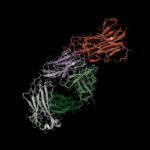Patent Thickets & Opaque Pricing
Among the main obstacles to getting a biosimilar to market, Dr. Yazdany cites having the resources needed to conduct large studies, marshaling the regulatory expertise to navigate the FDA approval process, and “having a team of lawyers to basically challenge huge patent thickets.” Given the requirements, she says, “That’s not going to be something that a small pharmaceutical manufacturer can take on.”
North Chicago-based AbbVie, for example, has filed more than 200 patents and patent applications covering Humira, its manufacturing methods and other aspects associated with its use, Dr. Yazdany reports. Although the drug’s exclusivity period ended in 2014, none of its five FDA-approved biosimilar competitors have yet reached the U.S. market.
‘Broader adoption of FDA-approved biosimilars also may require more price transparency and a level playing field in the pharmacy benefit system.’ —Jonathan Kay, MD
“It is very unfortunate that we have this issue that no other country seems to have,” Dr. Kim says. Unless the federal laws change, she adds, “I don’t really think there is any way out at this point.”
In a joint statement issued Feb. 3, the FDA and the Federal Trade Commission announced plans to work collaboratively to “promote competitive markets for biological products.”3 As part of its plans to trim the patent thicket, the trade commission will review patent settlement agreements for any antitrust violations, while the agencies will work together to deter attempts to unfairly delay competition and take action against false or misleading comparisons between biologics and biosimilars.
Broader adoption of FDA-approved biosimilars also may require more price transparency and a level playing field in the pharmacy benefit system, says Jonathan Kay, MD, professor of medicine, and of population and quantitative health sciences, and the Timothy S. and Elaine L. Peterson Chair in Rheumatology at University of Massachusetts Medical School, Worcester. Biologic manufacturers often offer rebates or reimbursements based on volume or in exchange for preferred status on a pharmacy benefit manager’s formulary, but Dr. Kay and other critics say such deals lack transparency and have added a further barrier to the uptake of biosimilars.
“It creates a problem because the biosimilar manufacturer doesn’t have a chance to compete in an open way like they do in some of the bidding processes in Europe,” Dr. Yazdany says. “The second thing is that it distorts the market, because it’s no longer a free marketplace when these secret, non-transparent deals are happening.”
Dr. Kay says biosimilars simply have not reached a low enough price to incentivize their use. “Even if there’s a cost savings, it is not translated into cost savings for the individual patient,” he says. “There has to be something in it for the patient in order for them to be motivated to make the change, unless the patient has to change because the system doesn’t allow them any other choice.”
In addition, insured patients often receive rebate cards to cover the partial or full costs of any copayments for biologics, further reducing the incentive for a switch. “If a patient is receiving a drug that is treating their arthritis effectively and they don’t have to pay any copayment out of pocket, what price would be less expensive than that?” Dr. Kay says.
“As long as manufacturers and pharmacy benefit managers can negotiate discounts and rebates that are not readily apparent to the healthcare providers and the patients, the healthcare system remains opaque,” he says. Similarly, current Medicare reimbursement rates don’t incentivize the use of biosimilars.
Beyond cost considerations, Dr. Kay says physicians, other healthcare providers and patients don’t necessarily understand that FDA-approved biosimilars have demonstrated equivalent efficacy and comparable safety and immunogenicity. That point is critical, because a lack of education can lead patients to expect and then perceive their condition isn’t responding as well to a biosimilar as to the reference drug they’ve been taking, a phenomenon known as the “nocebo” effect. Countering that perception, which can complicate open-label trials and patient adherence, requires both education and open communication, Dr. Kay says.
“If a patient is comfortably treated with the reference and you’re asking them to switch, you have to explain the nature of the biosimilar, and that they shouldn’t expect to be doing any less well,” Dr. Kay says. Such education requires more time and effort for healthcare providers, and in the absence of any financial benefit or other motivation, the “noble intention to save the healthcare system money or to save a third-party payer money” may not be enough to drive a significant uptake in prescriptions.


